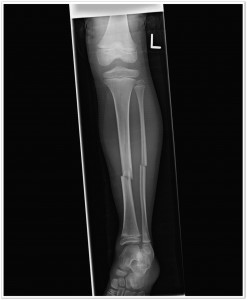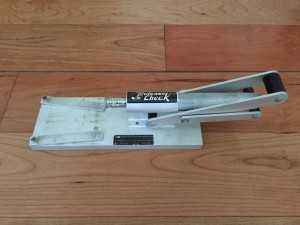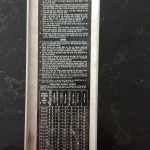 Toni Matt was a victim of the most common skiing injury during the early days of organized skiing. Granted Matt’s was a severe case, but broken legs were a common occurrence. Before World War II, it is estimated that the injury rate was ten skiers per thousand skier-days and greater than 50% of those injuries were broken legs. In 1953 the Mount Mansfield Ski Patrol would report a rate of four leg fractures per thousand skier-days. That’s a slight improvement over the earlier estimates, but still broken legs were the most common serious injury. Famous skiers such as Toni Sailer, Buddy Werner, and Jean Claude Killy all suffered broken legs during their careers. Chances are if you started skiing in the 1930s, 40s, or 50s, you have a broken leg story of your own.
Toni Matt was a victim of the most common skiing injury during the early days of organized skiing. Granted Matt’s was a severe case, but broken legs were a common occurrence. Before World War II, it is estimated that the injury rate was ten skiers per thousand skier-days and greater than 50% of those injuries were broken legs. In 1953 the Mount Mansfield Ski Patrol would report a rate of four leg fractures per thousand skier-days. That’s a slight improvement over the earlier estimates, but still broken legs were the most common serious injury. Famous skiers such as Toni Sailer, Buddy Werner, and Jean Claude Killy all suffered broken legs during their careers. Chances are if you started skiing in the 1930s, 40s, or 50s, you have a broken leg story of your own.
 “It’s the bindings, stupid!” While that may not be exactly what Hjalmar Hvam said, it summarizes his revelation while recovering from, you guessed it, a broken leg. Hvam was a Norwegian immigrant living in Oregon and is credited with designing and selling the first release binding in 1939, the Saf-Ski.
“It’s the bindings, stupid!” While that may not be exactly what Hjalmar Hvam said, it summarizes his revelation while recovering from, you guessed it, a broken leg. Hvam was a Norwegian immigrant living in Oregon and is credited with designing and selling the first release binding in 1939, the Saf-Ski.
Jump ahead to the 1950s. In 1950 Frenchman Jean Beyl would introduce the Look Nevada toe piece. It was the first of what I would consider the modern ski bindings. It had adjustable release tension and anti-shock capability. Hannes Marker would introduce his Duplex toe in 1952 and then the Simplex in 1953. The latter had adjustable release tension. Countless other toe pieces designed to release in some fashion entered the market in the early 1950s. I had a Ski-Free and I see there was even a toe piece called the Stowe Flexible! But despite the proliferation of release bindings, broken legs were still the most common skiing injury.
In 1952 Mitch Cubberley would design a toe piece that would literally release in all directions. Then in 1955 Cubberley added the first step-in heel to become what we recognize as the Cubco binding. Cubberley was ahead of his time, but his ugly design delayed acceptance of his ideas.
One person who did recognize that Cubberley was heading in the right direction was a skier and product designer named Gordon Lipe. Lipe would work with Cubberley and they would identify friction as the enemy of the release binding. Cubberley had tried to get around it with metal boot attachments, but plastic boots made that difficult. Lipe would invent the Lipe Slider, an anti-friction device that went on the ski under the boot. Almost every binding today has some similar anti-friction surfaces.
 Lipe also observed that many bindings featured adjustable release tension, but there wasn’t a way to gauge a proper setting except trial and error. So he designed a simple device to associate a value with the force required to release the binding at a particular tension setting. Through experiments Lipe was able to associate the values with a skier’s weight and ability. This was the predecessor of the DIN values used today to set binding release tension. The Lipe Release Check would be used by ski shops to more accurately set binding release tension for skiers. There was also an inexpensive consumer version that skiers could buy for home use. I still have mine.
Lipe also observed that many bindings featured adjustable release tension, but there wasn’t a way to gauge a proper setting except trial and error. So he designed a simple device to associate a value with the force required to release the binding at a particular tension setting. Through experiments Lipe was able to associate the values with a skier’s weight and ability. This was the predecessor of the DIN values used today to set binding release tension. The Lipe Release Check would be used by ski shops to more accurately set binding release tension for skiers. There was also an inexpensive consumer version that skiers could buy for home use. I still have mine.



Leave a Reply